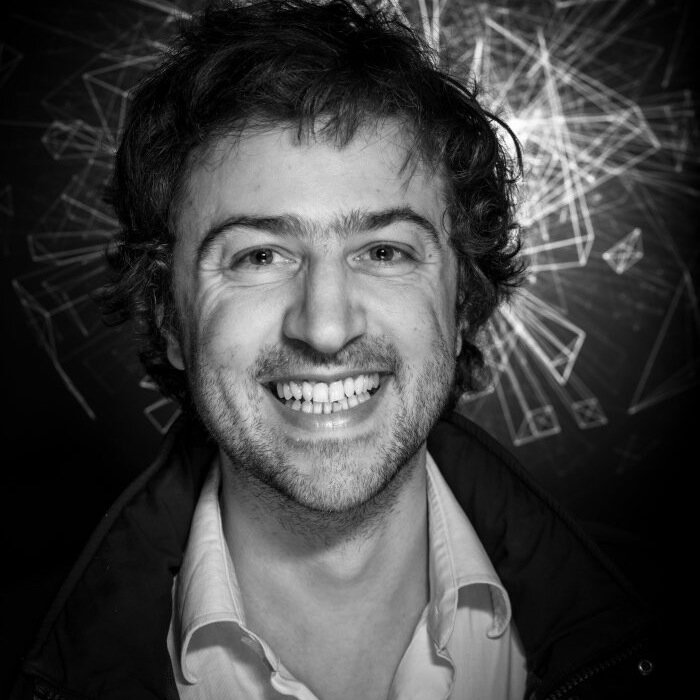
Emmanuel Château-Dutier
Emmanuel Château-Dutier is an associate professor in digital museology at the Université de Montréal. He directs the Ouvroir d’histoire de l’art et de muséologie numérique with Kristine Tanton.

Emmanuel Château-Dutier is an associate professor in digital museology at the Université de Montréal. He directs the Ouvroir d’histoire de l’art et de muséologie numérique with Kristine Tanton.
Emmanuel Château-Dutier directs with Kristine Tanton the Ouvroir d’histoire de l’art et de muséologie numérique.
Emmanuel Château-Dutier is an associate professor in digital museology at the Université de Montréal. His research interests include digital museology and digital art history, the administration of public architecture in France in the 19th century, the architectural profession and the relationship between project management and construction management, the architecture of zoological gardens, and architectural publishing and books. His doctoral thesis, completed under the direction of Jean-Michel Leniaud, was on the Conseil des bâtiments civils and the history of the administration of public architecture in the first half of the 19th century and was awarded a prize by the Académie d’architecture.
He is the author of numerous articles in scholarly journals and refereed publications on the history of public architecture, digital museology, and digital art history. A member of various scholarly societies, Emmanuel Château is notably the Francophone Vice-President of the Canadian Society for Digital Humanities and a member of the Coordinating Committee of Humanistica, the Francophone association for digital humanities. He is also a member of the Steering Committee of the journal Humanités numériques and a member of the editorial secretariat of Ædificare, an international journal on the history of construction, published by Classiques Garnier.
Emmanuel Château-Dutier leads various collective or individual research projects. In 2018, he began, with Robert Carvais, Valérie Nègre and Michela Barbot, an interdisciplinary research project funded by the Agence Nationale de Recherche, entitled Pratiques des savoirs entre jugement et innovation, Experts, expertises du bâtiment, Paris 1690-1790. This project has been selected to participate in the Getty’s advanced workshop, Network Analysis and digital art history. Emmanuel Château-Dutier participates, or has participated, in several important collective research projects in art history that place digital technology at the heart of their reflection, such as the edition of Antoine Desgodets’ Cours à l’Académie royale d’architecture or the publication of Paris guidesbooks under the direction of Marianne Cojannot-Le Blanc at the Labex Pasts in present. His current personal research funded by SSHRC and FRQSC focuses on the Choix d’édifices publics construits et projetés en France and the study of deliberations and architectural commentary within the Conseil des bâtiments civils. He is responsible for the digital axis of a research partnership directed by Johanne Lamoureux on the New Uses of Art Collections, which begins in 2021, and coordinates the Art History and Digital Museology Laboratory associated with this research.
His work is part of a practice of art history and museology that takes into account digital means. It is not so much a question of considering digital humanities as a discipline in its own right, but rather of paying attention to the methods and practices of research in a digital context. His personal research focuses on the practice of architecture and its framing by administrative and regulatory procedures. This work is part of the historiographical current of the history of construction and techniques and is distinguished by its social dimension. In particular, it mobilizes digital methodologies for the treatment of large textual corpora and complex archival collections. This research finds a natural extension in the interdisciplinary project he is conducting on the institution of Parisian building experts and the profession of architect as part of a project supported by the Agence nationale de recherche, and winner of an international grant from the Getty Research Institute, in which he is applying statistical methods and social network analysis.
His work in museology is directly related to his research on the administration of architecture and art institutions, as he mobilizes an institutional and administrative history approach to historicize and critique the digital turn of museums. This work is directly informed by a fine knowledge of digital technologies that are considered from a socio-technical point of view. At the same time, he is very active in the development of digital applications related to research and heritage, with several major achievements in the field of critical editing of primary sources or the use of cultural metadata standards. This is an area of expertise that he intends to put to good use, particularly at UdeM, with the creation of this art history and digital museology laboratory in connection with the New Uses of Art Collections project, which has just received significant funding from the CFI.